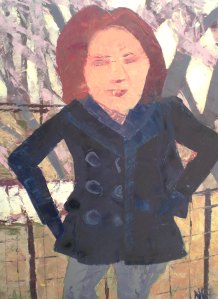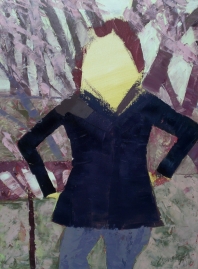Week of June 23
Simple and sincere… I think Susan and I both resemble those Limners’ style characteristics. My head is way too big for Susan’s body, but according to the disproportional figures of the Early American timeframe (circa 1700-1800) I’m allowing myself to ace this portrait. I completed my face in less than two hours which is a big accomplishment and I much prefer this end-product to my self-portrait. I do not have this much hair, although this 1980’s hairstyle definitely adds personality and character to our figure’s drab militaristic appearance. “Figure” seems like an odd descriptor for Susan and I combined but I don’t know how else to refer t o us.
o us.
Now onto self-criticism. My eyes should definitely move further to the right; nobody has a cheek that wide and crooked. I am clueless about how to capture my mouth’s gesture in the photo so I settled on a more flattering “blob” of paint. I am still imperfect with a few idiosyncracies, but at least most of my features are in proportion.
Q: What size is this canvas and why does it matter?
A: 18 x 24 inches. Unless I’m having a lackluster day, the canvas size often determines how quickly I’ll complete a painting.





Recent Comments